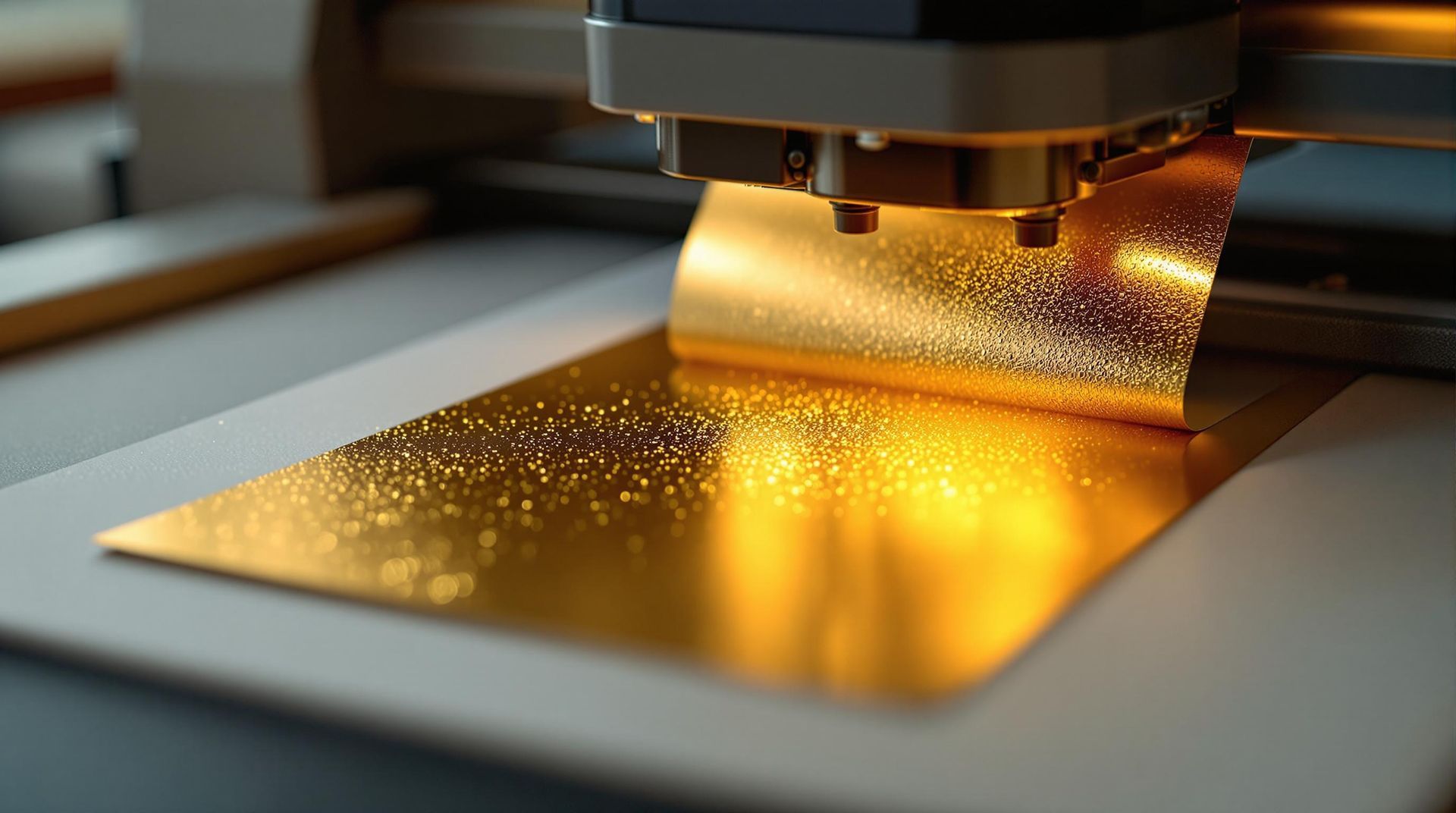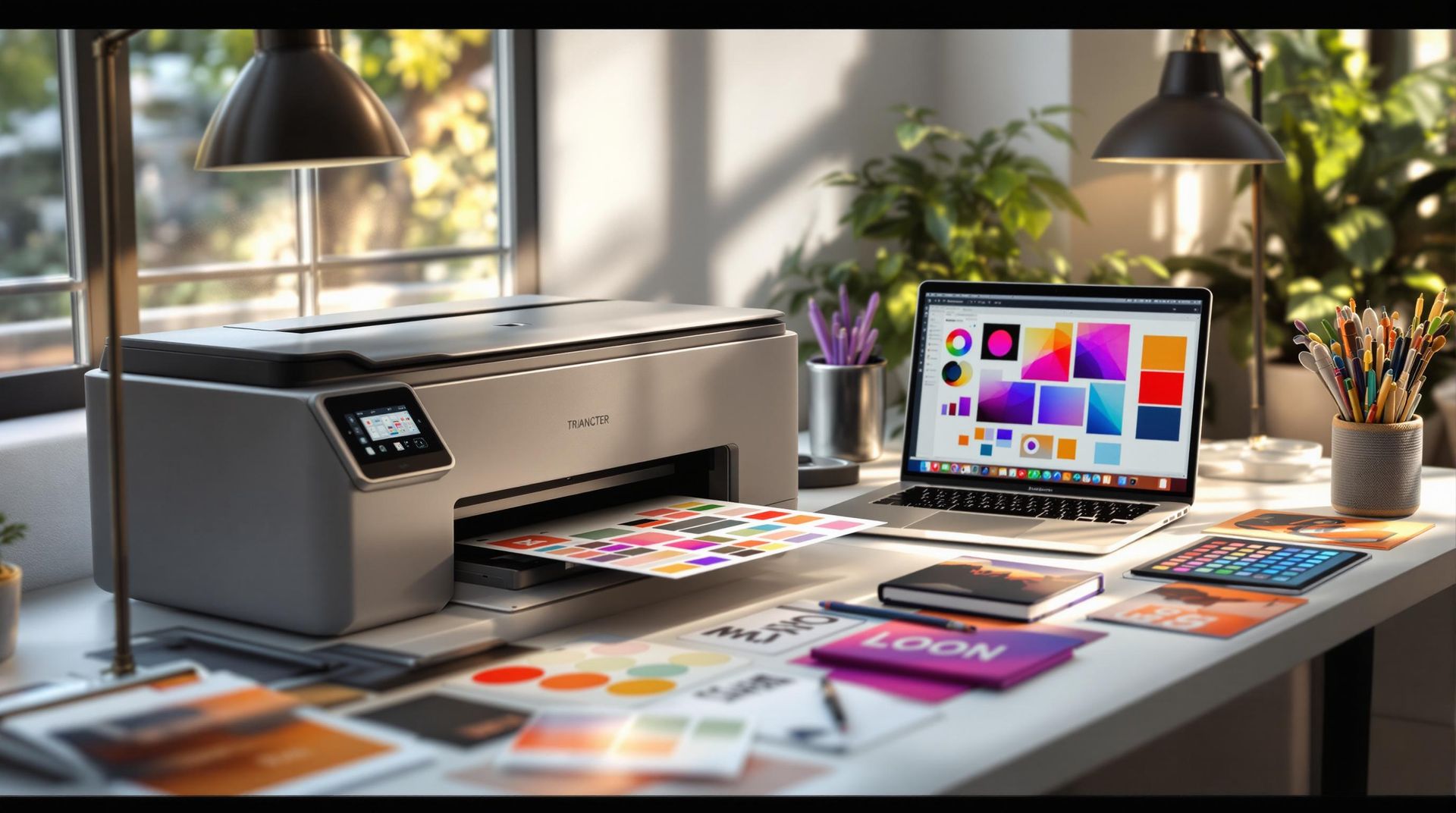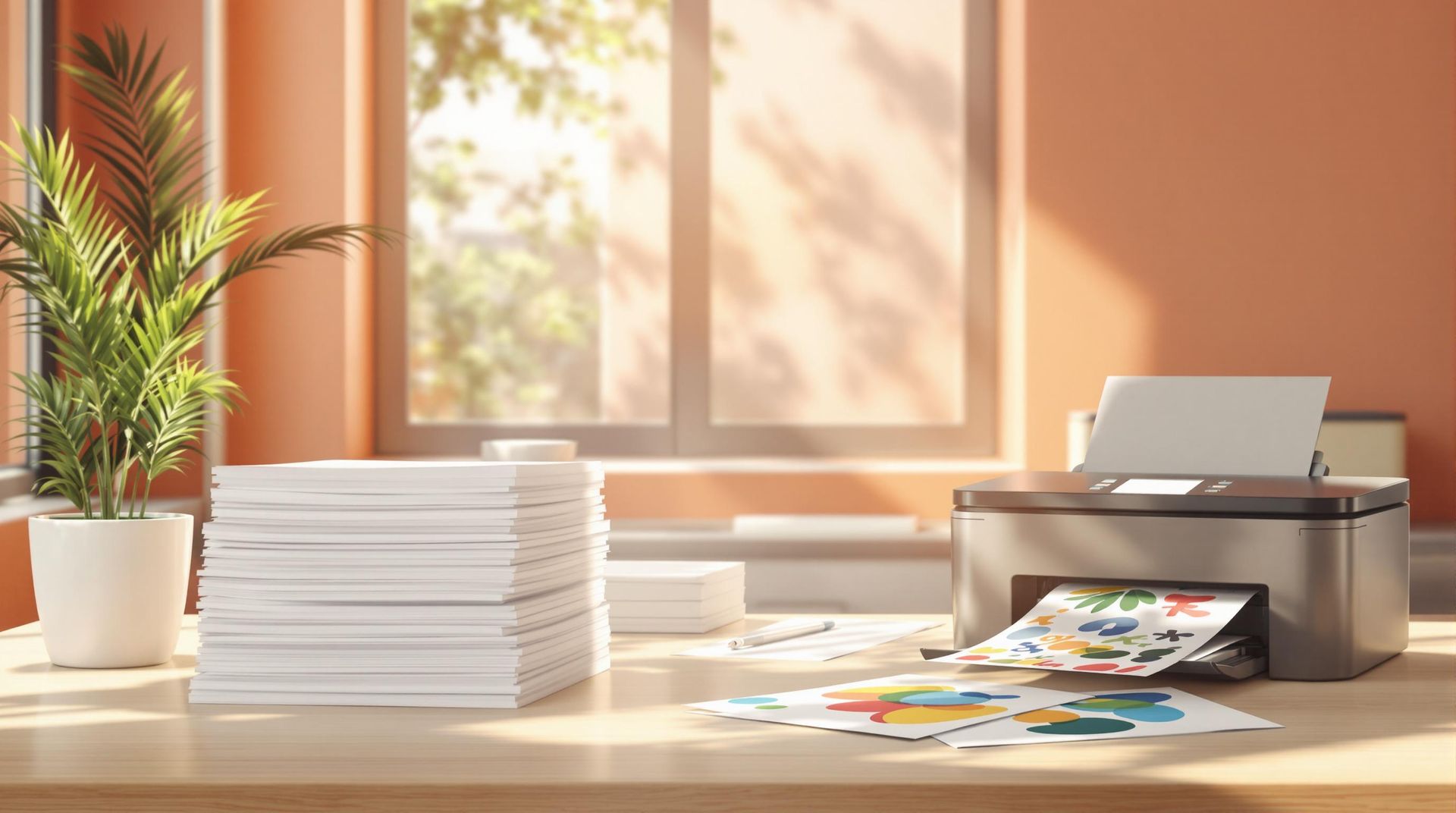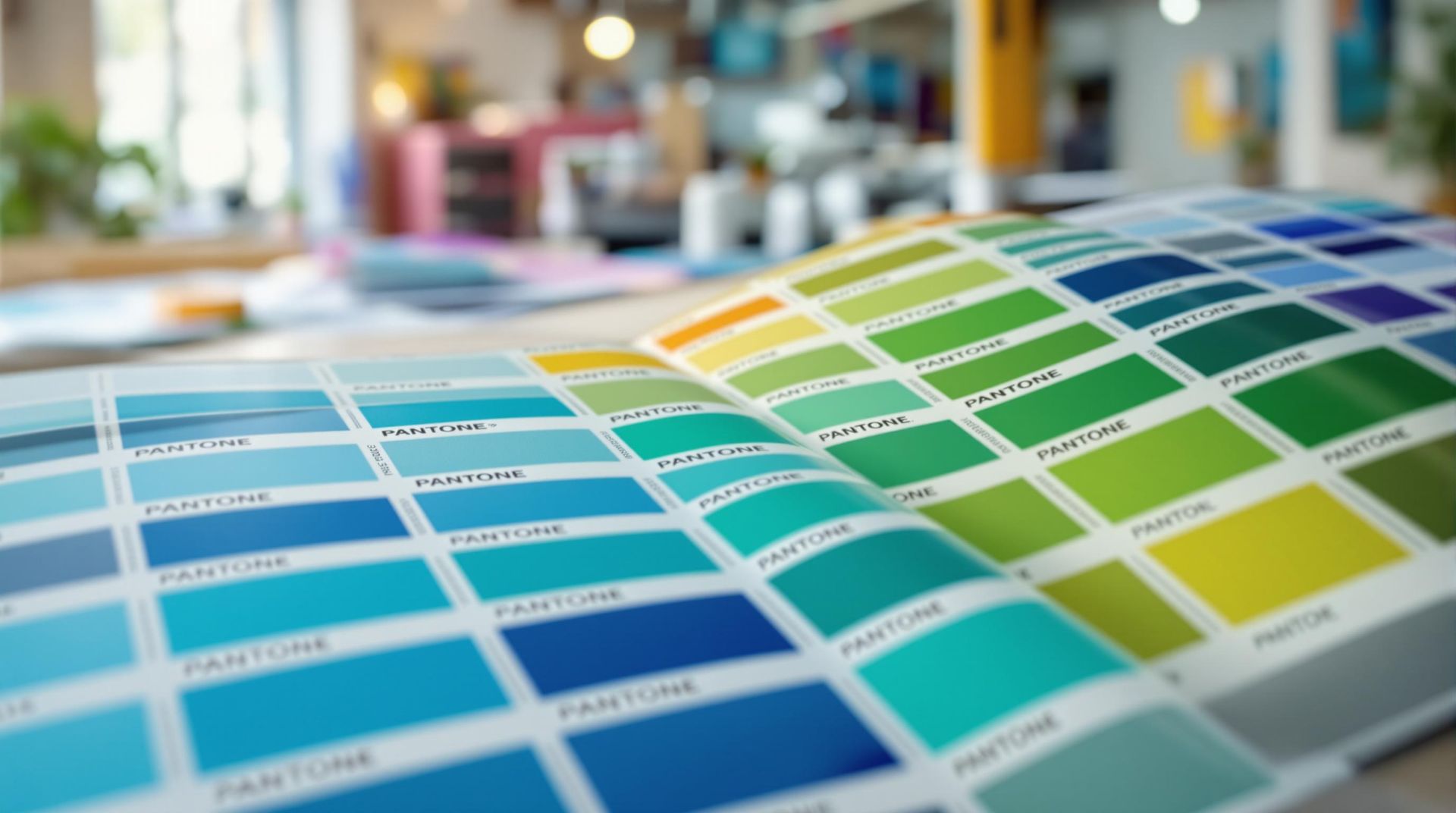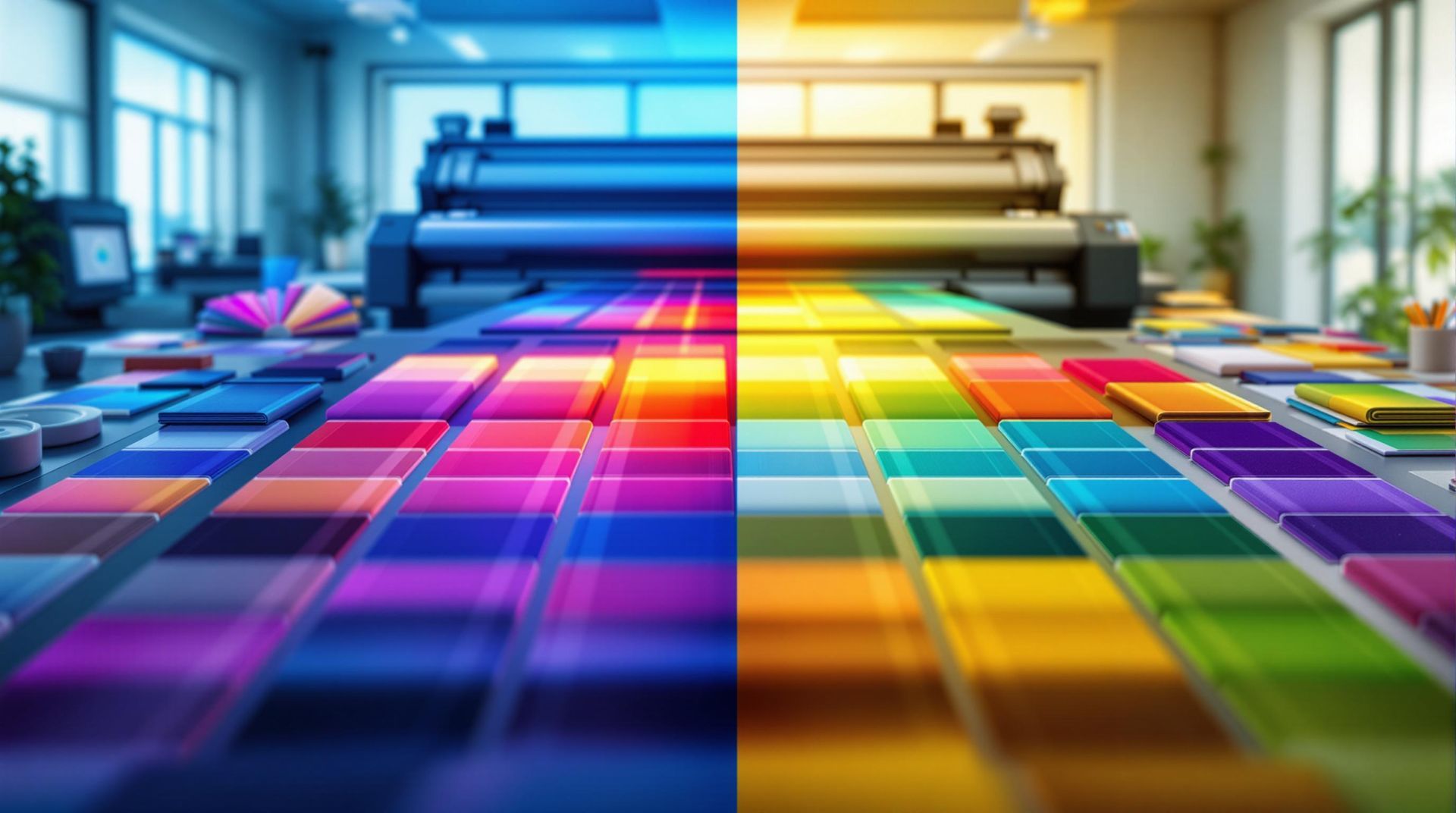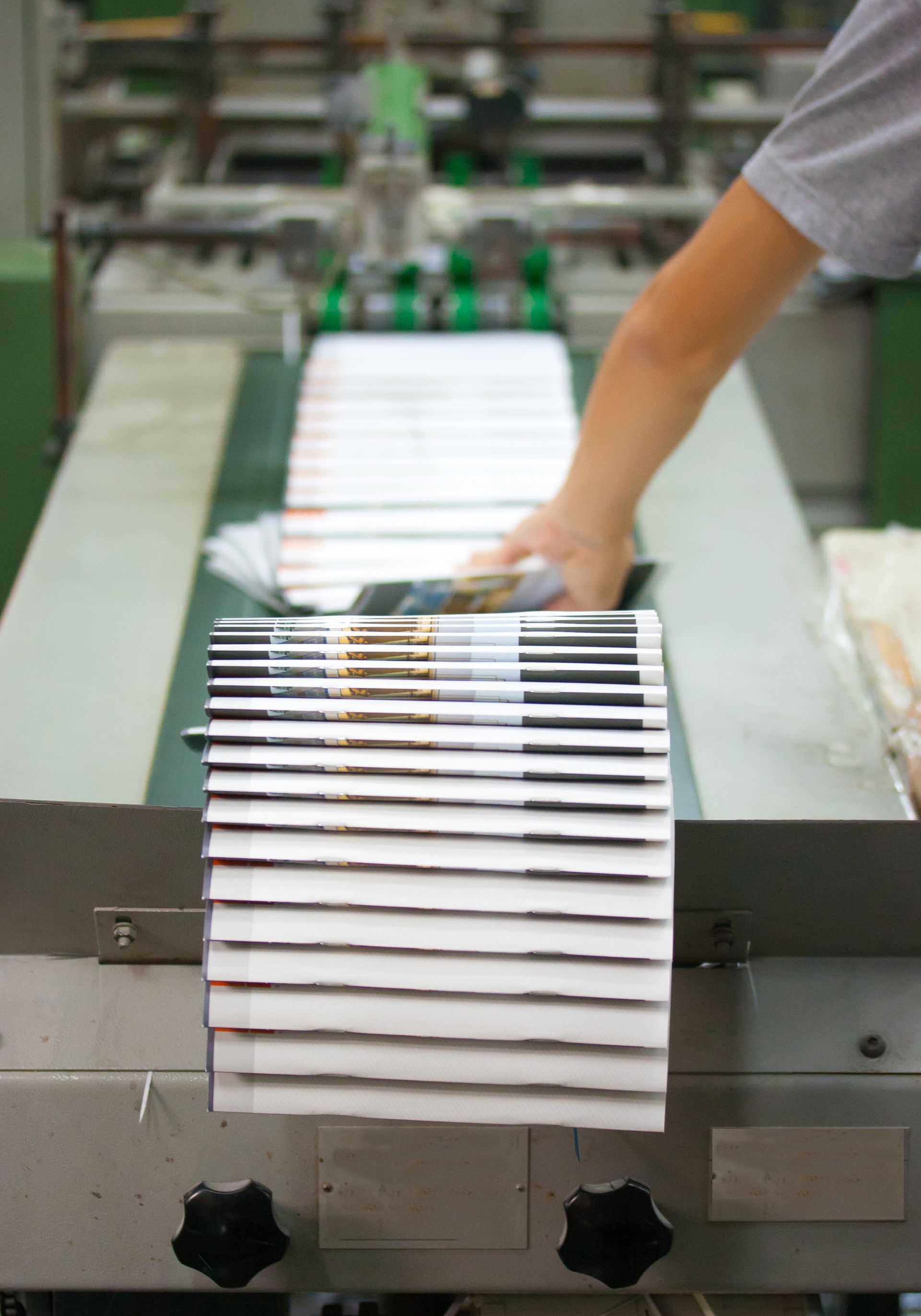Foil Stamping vs Metallic Ink: Key Differences
Foil stamping and metallic ink are two methods for adding metallic finishes to printed materials, each with unique benefits:
- Foil Stamping : Offers a shiny, mirror-like finish with raised texture, ideal for bold designs like logos or luxury packaging. More durable but higher in cost.
- Metallic Ink : Provides a soft shimmer with a smooth texture, perfect for detailed designs and gradients. Budget-friendly but less durable.
Quick Comparison
| Feature | Foil Stamping | Metallic Ink |
|---|---|---|
| Shine Level | High-gloss, reflective | Subtle, pearlescent |
| Texture | Raised, tactile | Smooth, flat |
| Durability | Long-lasting | Moderate, prone to wear |
| Cost | Higher | Lower, cost-efficient |
| Best For | Bold, luxury designs | Intricate, detailed designs |
Choose foil stamping for high-end, durable projects and metallic ink for affordable, detailed designs.
Metallic Ink vs Foil Stamping
How They Look
Foil stamping and metallic ink each create unique visual effects that can influence the overall look of your project. Knowing the differences between these techniques can help you pick the one that fits your design goals.
Foil Stamping Finish
Foil stamping produces a shiny, mirror-like effect with a raised texture that’s both visible and touchable [1] . This method works well for bold designs like logos, luxury packaging, or embossed details that need to stand out.
Metallic Ink Finish
Metallic ink, on the other hand, creates a soft shimmer that blends into the surface [3] . It’s ideal for intricate designs, gradients, or projects with multiple metallic shades. The smooth texture integrates seamlessly with other printed elements.
| Characteristic | Foil Stamping | Metallic Ink |
|---|---|---|
| Shine Level | High-gloss, mirror-like | Subtle, pearlescent |
| Surface Texture | Raised, tactile | Smooth, flat |
| Detail Capability | Great for bold elements | Perfect for fine details |
| Visual Impact | Bold and attention-grabbing | Elegant and understated |
| Design Integration | Stands out | Blends in |
Your choice depends on the look you’re going for. For example, Miro Printing & Graphics Inc. recommends foil stamping when you want maximum visual impact, while metallic ink is better suited for detailed, refined designs [3] .
With the visual differences covered, let’s dive into how these techniques compare when it comes to cost.
Cost Differences
When deciding between foil stamping and metallic ink, understanding the cost variations can help you choose an option that fits your budget. These two methods differ significantly in price due to their unique production processes.
Foil Stamping Costs
Foil stamping tends to be more expensive because of its detailed process. This method requires custom dies, specialized equipment, and high-quality materials, which drive up costs [1] . It’s especially pricey for smaller production runs but delivers a striking finish that’s perfect for upscale projects.
Metallic Ink Costs
Metallic ink is a more budget-friendly choice while still offering a polished metallic look. It’s particularly cost-efficient for larger production runs since it works seamlessly with standard printing processes [2] . The fewer production steps involved make it a more affordable alternative compared to foil stamping [1] [2] .
At Miro Printing & Graphics Inc., clients can get tailored cost estimates for both methods to ensure their choice aligns with project goals. The decision often comes down to priorities: foil stamping for luxurious, high-end designs and metallic ink for a sophisticated look at a lower price.
Cost isn’t the only consideration – durability also affects the overall value of your printed materials.
sbb-itb-ce53437
Durability
Durability plays a big role when choosing a metallic finish, especially for items meant to last or handle frequent use. Foil stamping and metallic ink each offer different levels of resistance and longevity.
Foil Stamping Durability
Foil stamping creates a strong, lasting finish by bonding metallic foil to the material using heat and pressure. This makes it a great choice for items that see a lot of use or need to maintain a premium look over time, such as:
- Premium business cards
- Luxury product packaging
- High-end promotional materials
- Corporate identity materials
Metallic Ink Durability
Metallic ink, which contains metal particles, can wear down or crack over time, especially with frequent handling or bending. Adding a protective coating can help extend its life, but it also adds more steps and costs to production [1] [2] .
| Durability Factor | Foil Stamping | Metallic Ink |
|---|---|---|
| Wear Resistance | Strong resistance to scratches and wear | Moderate, shows wear with frequent use |
| Longevity | Lasts for years without major changes | May need a coating for longer durability |
| Environmental Factors | Handles moisture and temperature well | More vulnerable to environmental damage |
| Flexibility | Holds up when bent or folded | Prone to cracking when flexed |
Miro Printing & Graphics Inc. often suggests foil stamping for projects where durability is a priority. While it may cost more upfront, its long-term performance makes it worth the investment.
Now that we’ve covered durability, let’s look at how to choose the right method for specific projects.
When to Use Each
Choosing between foil stamping and metallic ink comes down to your project’s goals, budget, and how it will be used.
Best Uses for Foil Stamping
Foil stamping works best for high-end packaging, event materials like invitations, and professional branding items such as business cards or certificates. It stands out in:
- Luxury Projects : Perfect for upscale retail packaging or exclusive promotional items.
- Memorable Keepsakes : Wedding invitations or commemorative pieces where the extra cost is justified by their lasting value.
- Professional Branding : Business cards, annual reports, and certificates that need to exude quality.
Best Uses for Metallic Ink
Metallic ink is a great choice for detailed designs, budget-friendly marketing, and short-term projects. It shines in:
- Intricate Designs : Ideal for fine text, small details, or gradient effects.
- Marketing Materials : Brochures, catalogs, and promotional items for large-scale print runs.
- Short-Term Use : Seasonal promotions or event materials where durability isn’t a top concern.
| Application | Foil Stamping | Metallic Ink |
|---|---|---|
| Premium Materials | Perfect for lasting impressions | Good for budget-friendly options |
| Design Detail | Best for bold, striking elements | Excellent for detailed, fine designs |
| Production Scale | Affordable for smaller quantities | Cost-effective for larger print runs |
When deciding, think about the visual impact, durability, and budget. Miro Printing & Graphics Inc. recommends assessing your project’s lifespan, handling needs, and financial constraints to make the right choice [1] [3] .
Next, let’s directly compare these techniques to help you finalize your decision.
Side-by-Side Comparison
Here’s a closer look at how foil stamping stacks up against metallic ink, so you can decide which option fits your project’s needs.
| Feature | Foil Stamping | Metallic Ink |
|---|---|---|
| Visual Appeal | Bright, reflective metallic shine with a raised texture | Subtle metallic effect with a smooth finish |
| Application | Added after printing using heat and pressure | Applied as part of the printing process |
| Design Suitability | Works well for bold, larger elements; not ideal for fine details | Great for intricate designs and detailed work |
| Color Options | Limited to pre-made foil colors | Wide variety of metallic shades through color mixing |
| Surface Compatibility | Best on smooth, flat surfaces | Works with many types of paper |
| Production Time | Slower due to extra processing steps | Faster as it integrates into standard printing |
| Durability | Long-lasting and resistant to cracking | Can crack or become brittle over time |
| Cost | Higher per piece | More budget-friendly, especially for large quantities |
| Handling and Environment | Less sensitive to moisture and frequent handling | Can be affected by moisture and wear |
| Embossing Options | Pairs well with embossing or debossing for added texture | Limited ability to create dimensional effects |
This table highlights the strengths and limitations of each technique. When deciding, think about how often the item will be handled and how long it needs to last. For large-scale projects, metallic ink is often the quicker and more affordable choice. On the other hand, foil stamping is perfect for smaller projects that need to make a bold impression.
Conclusion
Foil stamping delivers a bold, long-lasting finish, making it ideal for high-end projects, while metallic ink offers a budget-friendly solution for intricate designs. Deciding between the two comes down to your project’s focus – whether that’s durability, visual impact, or cost.
For the best results, working with experienced printers is key. Miro Printing & Graphics Inc. brings expertise in both digital and offset printing, along with a range of post-press services, to help you achieve the perfect balance for your project.

